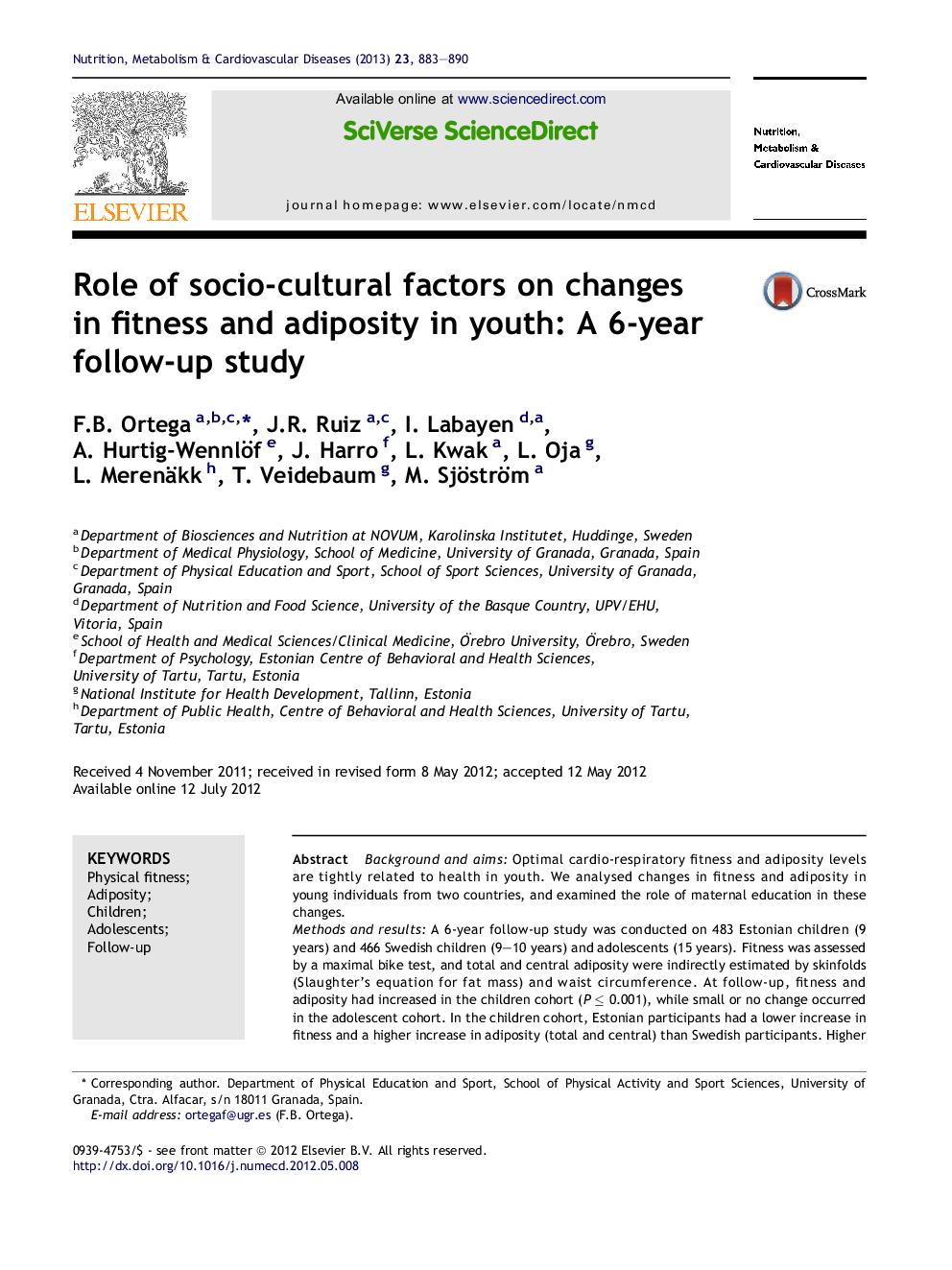| Article ID | Journal | Published Year | Pages | File Type |
|---|---|---|---|---|
| 3002340 | Nutrition, Metabolism and Cardiovascular Diseases | 2013 | 8 Pages |
Background and aimsOptimal cardio-respiratory fitness and adiposity levels are tightly related to health in youth. We analysed changes in fitness and adiposity in young individuals from two countries, and examined the role of maternal education in these changes.Methods and resultsA 6-year follow-up study was conducted on 483 Estonian children (9 years) and 466 Swedish children (9–10 years) and adolescents (15 years). Fitness was assessed by a maximal bike test, and total and central adiposity were indirectly estimated by skinfolds (Slaughter's equation for fat mass) and waist circumference. At follow-up, fitness and adiposity had increased in the children cohort (P ≤ 0.001), while small or no change occurred in the adolescent cohort. In the children cohort, Estonian participants had a lower increase in fitness and a higher increase in adiposity (total and central) than Swedish participants. Higher maternal education increased the odds of remaining fit (top quartile) by half and reduced the risk of remaining fat (top quartile) by half; odds ratios = 1.56 (1.00–2.43), 0.50 (0.32–0.77) and 0.61 (0.39–0.94) for fitness, total and central adiposity, respectively.ConclusionsOur data suggest that the socioeconomic situation of a country might influence key cardiovascular risk factors (fitness and adiposity), being at higher risk for a low–middle income country (Estonia) than a higher income country (Sweden). The findings stress the role of socioeconomic status, particularly maternal education, in the maintenance of healthy fitness and adiposity levels from childhood into later life. Preventive efforts have to be taken from early age.
